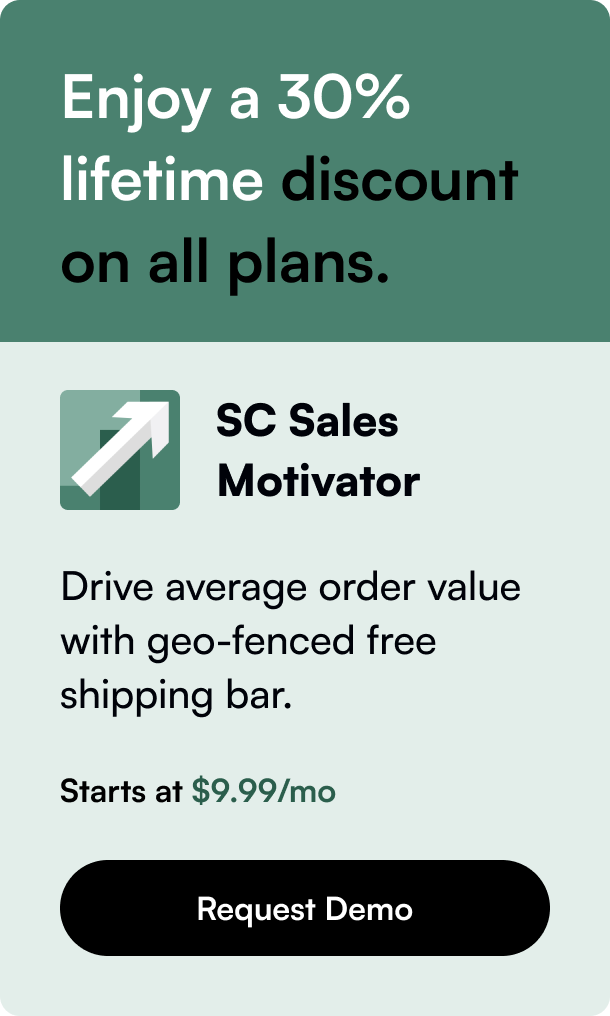Table of Contents
In today’s digital age, where e-commerce competition is fierce, having an engaging Shopify store is crucial. One excellent way to enhance the appeal of your online store and boost customer engagement is by incorporating videos. Videos can significantly impact consumer purchasing decisions. However, many store owners rely solely on YouTube for this, unaware of the alternatives that offer more control and branding opportunities. If you're seeking ways to add video to your Shopify store without using YouTube, you've come to the right place. This comprehensive guide will walk you through the process and showcase the value it brings to your e-commerce presence.
Introduction
Imagine landing on a website that instantly grabs your attention with a stunning, autoplay video showcasing a product in all its glory. It’s captivating, isn’t it? Videos have the power to bring your products to life, provide a better customer experience, and increase conversions. However, embedding videos from platforms like YouTube can have its drawbacks, such as unwanted advertisements or suggested videos that might lead your customers away from your site. This post will explore how to add videos directly to your Shopify store, bypassing YouTube and offering a seamless, branded experience to your customers.
By the end of this guide, you’ll understand the steps involved in adding videos directly to Shopify without YouTube, why this approach can be advantageous, and how to ensure your videos enhance your store without compromising its performance. Let’s dive in.
Video: The Game Changer for E-commerce
Incorporating videos into your Shopify store isn't just about aesthetics; it's a strategic move. Videos can significantly increase the time visitors spend on your site, giving them a better understanding of your products and, ultimately, boosting sales. Whether it's a product demo, customer testimonial, or behind-the-scenes look, videos have the power to convey messages that images and text simply cannot match.
Why Move Away from YouTube?
While YouTube is a fantastic platform for reaching a broad audience, it's not always the best choice for e-commerce sites aiming to control their brand narrative strictly. Ads, suggested videos, and external links can detract from the immersive shopping experience you're trying to create. By hosting videos directly on Shopify or through alternative platforms, you have complete control over the content and presentation.
The How-To: Adding Videos Directly to Shopify
Direct Uploads to Shopify
Shopify allows you to add videos directly to your product pages without requiring an external hosting service like YouTube or Vimeo. Here's how:
-
Prepare Your Video: Ensure your video is in MP4 format, which is widely supported and offers a good balance between quality and file size.
-
Upload Your Video: Navigate to the 'Files' section in your Shopify admin and upload your video file. Shopify supports videos up to 20MB in size. For larger files, consider compressing them or using a third-party hosting solution.
-
Embed the Video: Once uploaded, copy the video URL from the Files section. Then, go to the product page where you want to add the video and insert it using HTML in the product description or media section. Shopify’s rich text editor makes it straightforward to embed videos without needing extensive HTML knowledge.
Using Third-Party Hosting Services
For videos larger than Shopify’s limit, third-party hosting services like Wistia or Vimeo Plus offer more control over your video content than YouTube does. These platforms provide ad-free hosting, enhanced analytics, and better customization options, which can be crucial for creating a branded viewing experience. Embedding videos from these services onto your Shopify site follows a similar process to the direct upload method.
Best Practices for Shopify Videos
-
Optimize for Load Times: High-quality videos can slow down your page loading times, so it's essential to strike a balance. Consider using video compression tools to reduce file sizes without significantly compromising quality.
-
Autoplay and Muting: For a smoother user experience, set your videos to autoplay and mute by default. This approach grabs attention without being intrusive, allowing viewers to opt-in for sound as desired.
-
Mobile Optimization: With an increasing number of shoppers browsing on mobile devices, ensure your videos are responsive and mobile-friendly.
-
SEO: Don’t forget to optimize your video descriptions, titles, and meta tags to improve your Shopify store's search engine visibility.
Conclusion: Beyond YouTube
Integrating videos into your Shopify store is a powerful way to engage customers and stand out in a competitive e-commerce landscape. By hosting videos directly on Shopify or using alternative platforms, you can offer a seamless, branded experience free from the distractions and limitations associated with YouTube. Follow the steps and best practices outlined in this guide to enhance your store's appeal and drive more conversions with compelling video content.
FAQ Section
Q: Can I add videos to Shopify product pages without any coding knowledge? A: Yes, Shopify’s admin interface and rich text editor enable you to embed videos with minimal to no coding. Follow the direct upload steps mentioned above for a hassle-free process.
Q: Are there size limits for videos added directly to Shopify? A: Yes, Shopify allows for video files up to 20MB. For larger files, consider compressing them or using a third-party hosting service.
Q: Can I use autoplay for videos on Shopify? A: Yes, when embedding your video, you can set it to autoplay. However, ensure it’s muted by default to avoid disrupting the user experience.
Q: How do I ensure my videos don’t slow down my Shopify site? A: Optimize your video files by compressing them and considering using a content delivery network (CDN) if hosting videos externally. This minimizes file sizes and speeds up loading times.
Q: Is it worth using third-party video hosting services for Shopify? A: If you need more control over your video content, analytics, and customization or if your files exceed Shopify’s size limits, third-party services offer valuable features that can enhance your video strategy.








